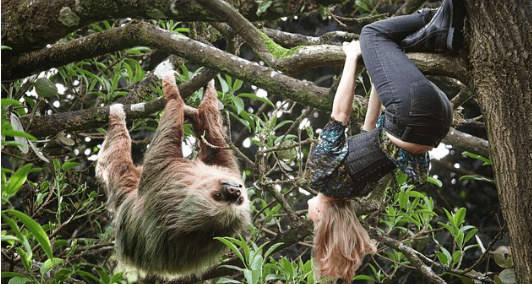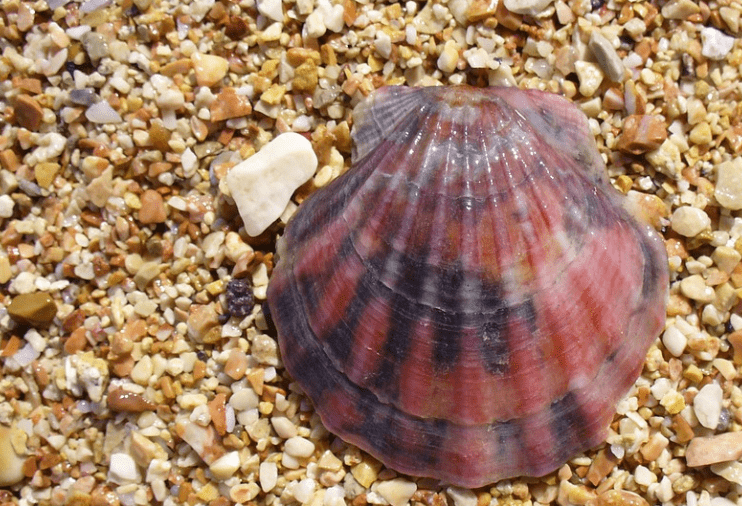Picture this: you’re wandering through a lush, tropical rainforest filled with the sweet scent of blooming flowers and the gentle rustling of leaves. As you gaze up into the canopy, you spot an adorably slow-moving creature, the epitome of leisurely living – the sloth. But hold on a minute!
Before you swoon over their undeniable cuteness, we must ask ourselves the million-dollar question: Are sloths dangerous to humans? Join me, dear animal enthusiasts, as we explore the risks of sloth attacks and aggression in this thrilling, tree-hugging escapade!
Read Also: 16 Fantastic Animals That Crawl (Details And Pictures)
In this riveting blog post, we’ll take a walk on the wild side and delve into the lesser-known facts about these lovely lumps of fur.
Sloths may look like they wouldn’t hurt a fly, but we’ll uncover the truth about their feisty side, hidden beneath those seemingly serene expressions. With their long, sharp claws and surprising agility, we’ll learn that even these slowpokes can pack a punch when provoked.
But fear not, my fellow animal devotees! Our journey won’t be all doom and gloom. We’ll also unravel the reasons behind their occasional aggression and discuss how we can foster a harmonious relationship with these fascinating tree-dwellers. After all, who wouldn’t want to coexist peacefully with these charming, smiley-faced critters?

So, let’s embark on this eye-opening adventure together and unlock the secrets of sloths and their complex relationship with us humans. As we swing from branch to branch, we’ll paint a vivid picture of the sloth’s world, exploring the delicate balance between their captivating allure and the potential hazards lurking beneath the surface.
Are you ready to take the plunge into this enigmatic world? I can’t wait to share this exhilarating expedition with you!
Read Also: Memory Misfits: 11 Animals With Bad Memory You Won’t Believe!
Do Sloths Attack Humans? Unraveling the Enigma that is the Sloth!
On a balmy, tropical afternoon, you encounter a sloth suspended in repose, leisurely munching on leaves. Your curiosity piqued, you wonder: “Do these seemingly gentle creatures pose a threat to us, homo sapiens?”
This fascinating question demands a deep dive into the captivating world of sloths, and that is precisely what we will do! Now, let us venture into the crux of our original inquiry: do sloths attack humans?
Though sloths are equipped with sharp claws, primarily used for climbing and defense, they are not typically aggressive toward humans. Instances of sloth-on-human altercations are exceedingly rare. However, like wild animals, a sloth may react defensively if cornered or threatened.
Imagine for a moment that you stumble upon a sloth in its natural habitat. If you maintain a respectful distance, the sloth will most likely continue its leisurely activities, unperturbed by your presence. Should you inadvertently encroach upon its personal space, the sloth may feel threatened and lash out in self-defense. Fear not; a sloth’s first instinct is to retreat, not attack.
Are Sloths Aggressive?
As discussed earlier, sloths are not typically aggressive creatures; they are mostly docile creatures with a gentle disposition. However, like any wild animal, a threatened or agitated sloth might display aggression as a defensive mechanism.
Sloths Are Solitary Creatures and Prefer to Be Left Alone
Both two-toed and three-toed sloths are solitary animals and prefer to be left alone in their natural habitats. Their lifestyle is deliberately slow, which allows them to remain unnoticed by predators. We can help preserve their natural habits and maintain a respectful distance by leaving them in peace.
Do Sloths Have Teeth? Understanding the Sloth’s Defense Mechanisms
Though sloths might not appear dangerous to humans, they are equipped with sharp teeth and claws that can potentially inflict harm.
Sloths’ teeth, while primarily used for feeding, can also be employed in self-defense against predators. In general, though, sloths are more likely to rely on their camouflage and remain hidden than actively fighting back against threats.

Is a Sloth a Dangerous Pet? The Reality of Keeping Sloths as Pets
One might surmise that their unhurried demeanor renders them docile and, therefore, ideal for domestication. Alas, this assumption may be misleading.
Sloths, like any wild animal, carry many bacteria and parasites that pose significant health risks to humans. Close contact with these enigmatic creatures could lead to zoonotic diseases capable of wreaking havoc on our immune systems.
Furthermore, their specialized diet of leaves and shoots is difficult to replicate in a domestic setting, leading to malnutrition and distress.
Above all, the question of keeping a sloth as a pet is not merely about the potential dangers they pose to us but rather the ethical implications of removing them from their natural habitat.
Sloths are not domestic animals, and the exotic pet trade often results in exploitation, abuse, and the degradation of their species. To love and admire these beguiling creatures is to recognize that they belong in the wild, where they can flourish and contribute to the balance of their ecosystems.
Wild Animals vs. Pet Sloths: How They Differ in Behavior
While it is essential to understand the risks associated with owning a pet sloth, it is worth noting that wild animals’ behavior and that of pets may differ significantly.
A sloth raised in captivity may have a docile nature, but it can become more unpredictable and potentially dangerous when stressed in an unfamiliar environment. Regardless, pet sloths are not generally considered a significant threat to humans.
Do Sloths Like to Be Touched? Respecting Their Boundaries
Like any animal, a sloth’s preference for touch can vary depending on factors such as mood, trust, and prior experiences. Generally, sloths dislike being touched, and doing so may cause them stress, leading to potential aggression.
It is essential to respect their boundaries and recognize that they are wild animals, not domesticated pets like cats or dogs.
The Responsibility of Owning a Sloth as a Pet
Keeping sloths as pets comes with a unique set of challenges and responsibilities. Sloths can be high maintenance, requiring specialized diets, care, and attention to ensure their well-being. Additionally, proper permits and adherence to regulations are essential factors to consider before bringing a pet sloth into your life.

Can Sloth Bites and Claws Inflict Harm on Humans?
Sloths may seem harmless and gentle with their slow movements and charming smiles, but their claws and teeth are not to be underestimated.
Their long, curved claws can be wielded like knives, while their sharp teeth deliver a painful bite. It’s crucial to respect and appreciate their wild nature from a safe distance to avoid any unexpected confrontations.
The Sharp Claws of a Sloth and Their Potential to Cause Injury
As said in a chapter above, sloths possess sharp claws that are used for climbing trees and defense against predators. If a sloth feels threatened, it could potentially swipe at a human and cause injury. However, this is highly unlikely, as sloths are typically non-aggressive.
Sloth Bites: Are They Dangerous?
The dangers posed by sloth bites primarily come from their sharp teeth, capable of causing lacerations. Despite this capacity, sloth bites are infrequent, and the potential for disease transmission is low. Nonetheless, it is still essential to take safety precautions and avoid provoking a sloth.
How to Avoid Provoking a Sloth and Preventing an Attack
The key to avoiding provoking a sloth is maintaining a respectful distance and respecting its boundaries. This includes refraining from feeding, touching, or trying to interact with the animal.
Frequently Asked Questions About Sloth Behavior and Safety
How Do Sloths React to Human Contact?
While sloths might tolerate human contact in certain situations, they generally prefer to be left alone. Respect their personal space, and avoid approaching or interacting with a wild sloth.
What To Do If You Encounter a Wild Sloth
If you encounter a wild sloth, observe it from a safe distance without attempting to touch or interact with the animal. If you feel compelled to observe the sloth up close, do so with caution and respect for the animal’s space.
Are Sloths Friendly or Just Non-Aggressive by Nature?
Sloths are typically non-aggressive, but this doesn’t necessarily mean they are friendly towards humans. Their gentle nature is often misconstrued as friendliness, but they are solitary creatures that prefer minimal interaction with others.
Conclusion: Are Sloths Dangerous to Humans, and Should You Be Worried?
Though sloths can exhibit aggressive behavior if provoked or agitated, they are not considered a significant danger to humans. Understanding sloth behavior and taking the proper precautions can minimize the likelihood of injury or unpleasant interactions.
The best way to interact with sloths safely is to observe them from a respectful distance, whether in the wild or captivity. Avoid touching or approaching a sloth; remember, they are solitary creatures by nature.
Understanding the potential risks and the importance of respecting a sloth’s space will help ensure a positive experience for humans and sloths alike.
Whether considering owning a pet sloth, visiting a sloth sanctuary, or merely marveling at its beauty from afar, it is crucial to remain informed and respectful to ensure the well-being of these fascinating animals.







